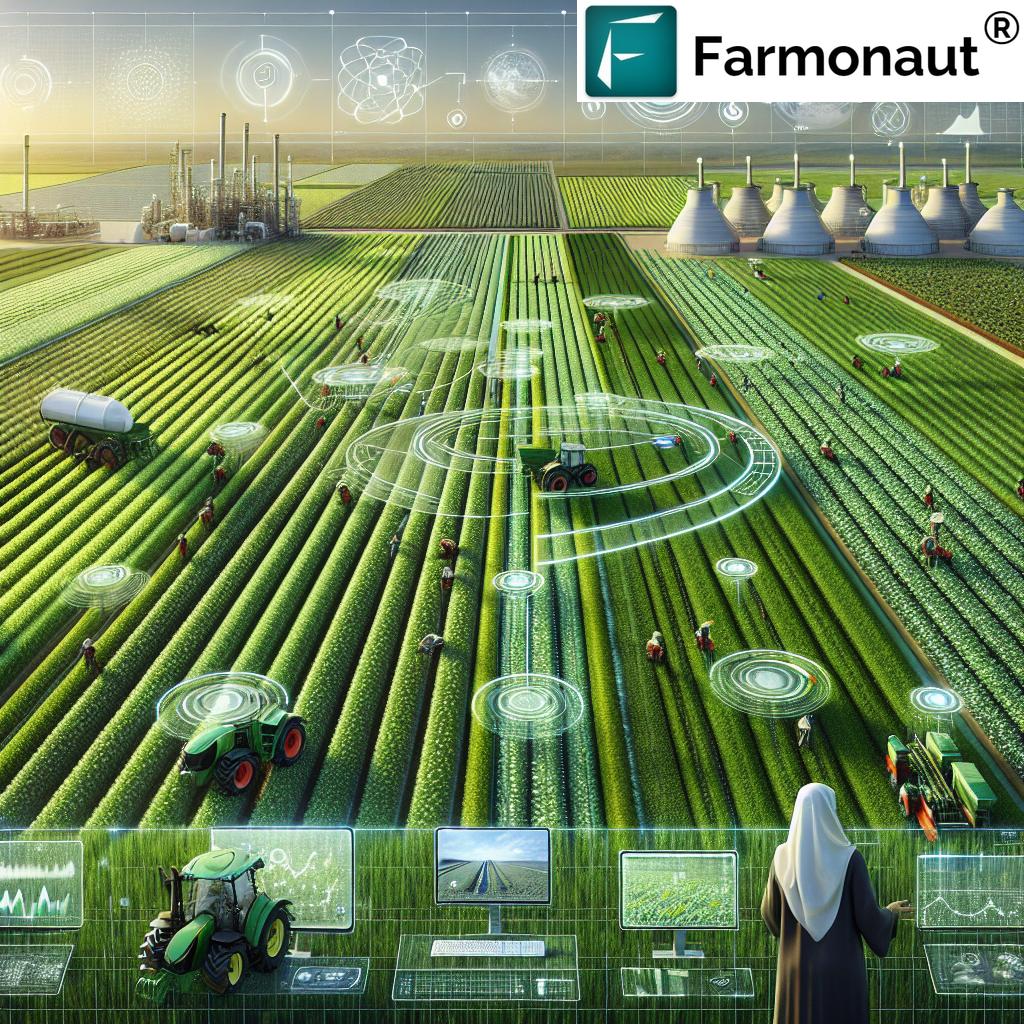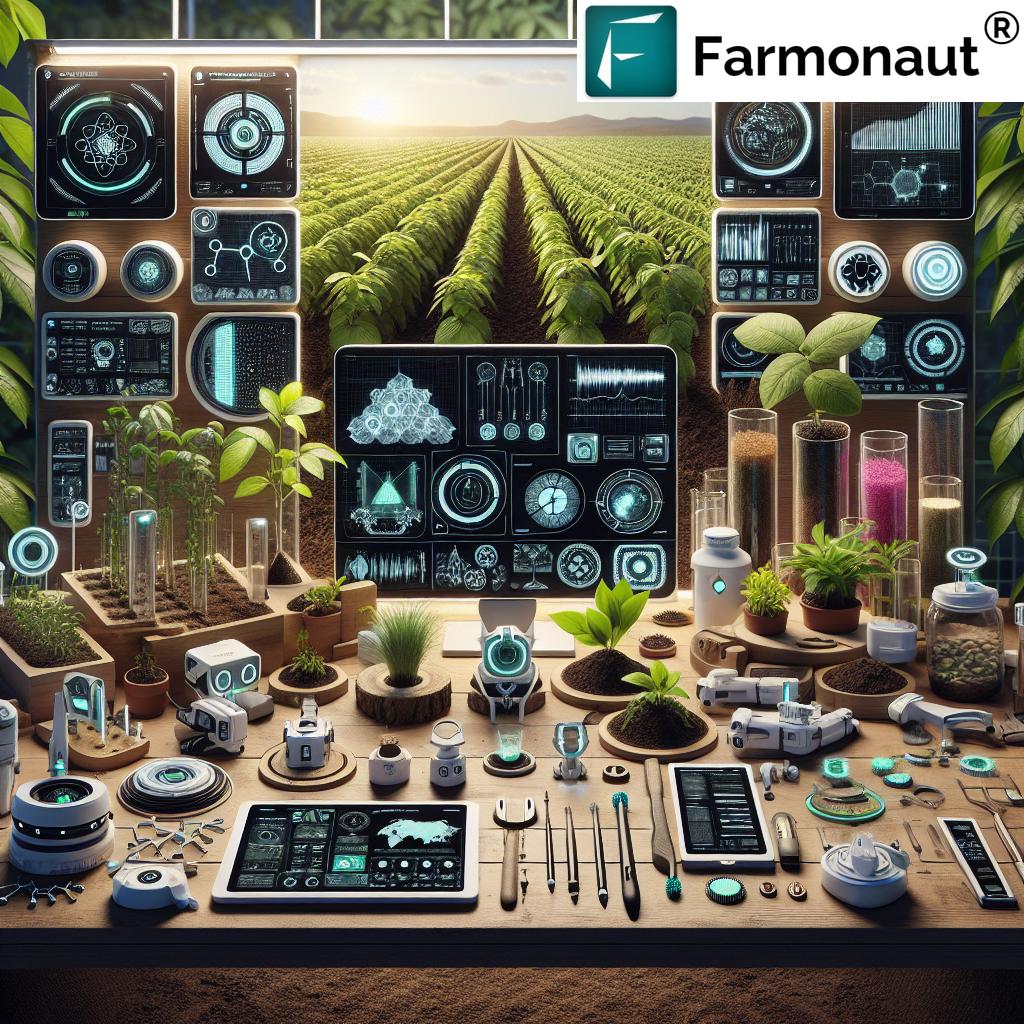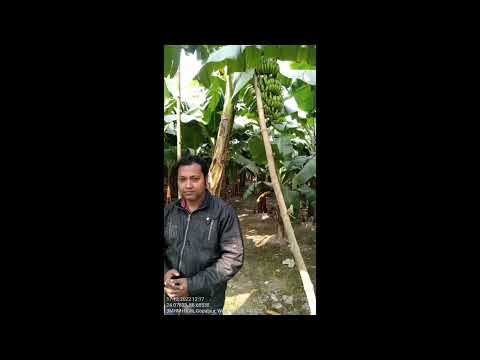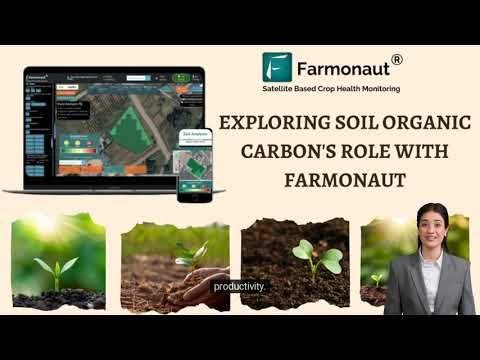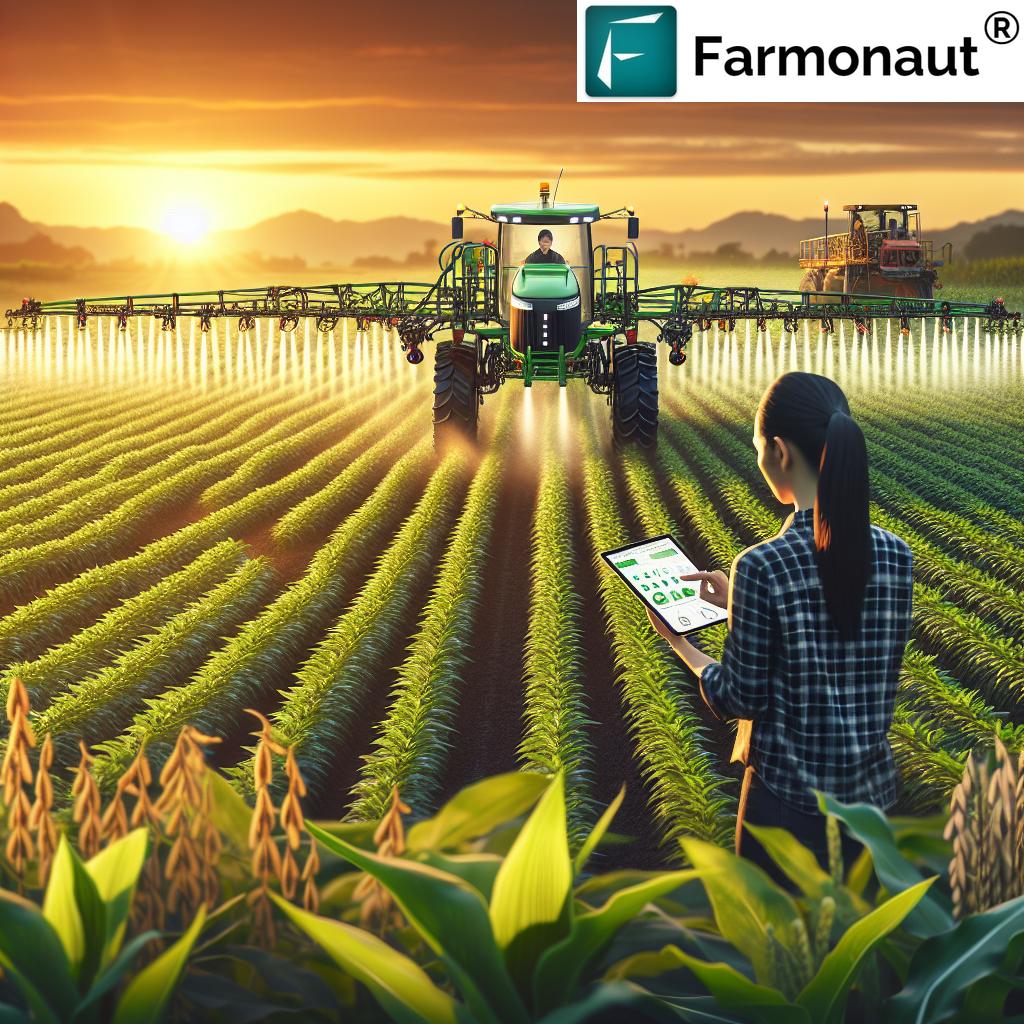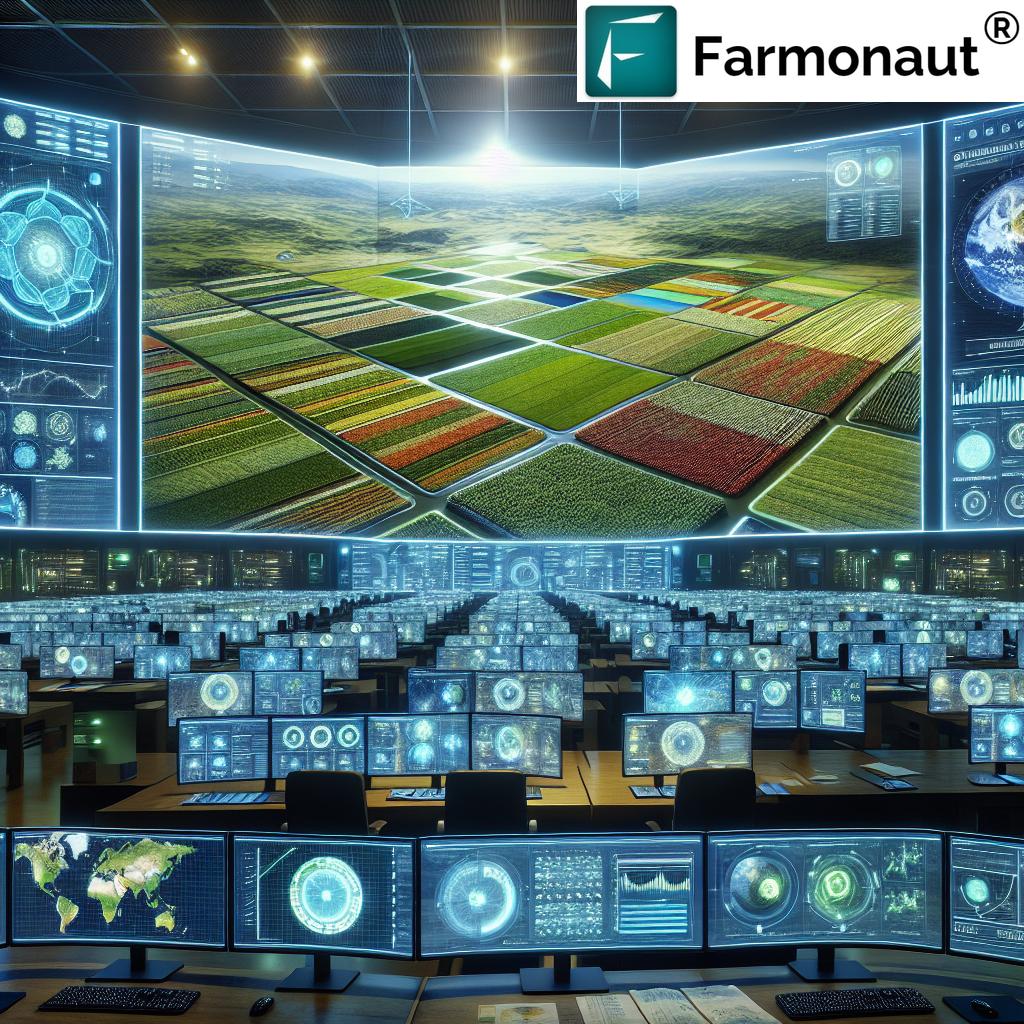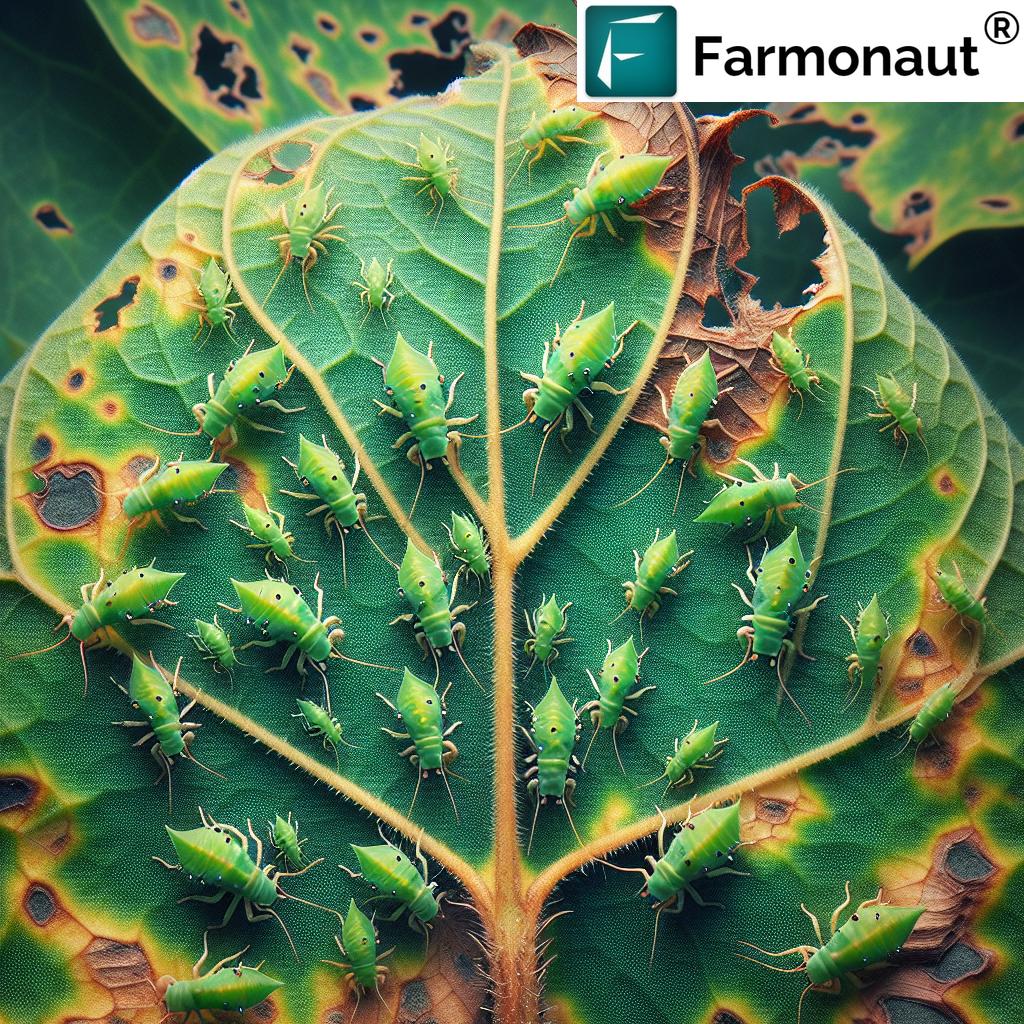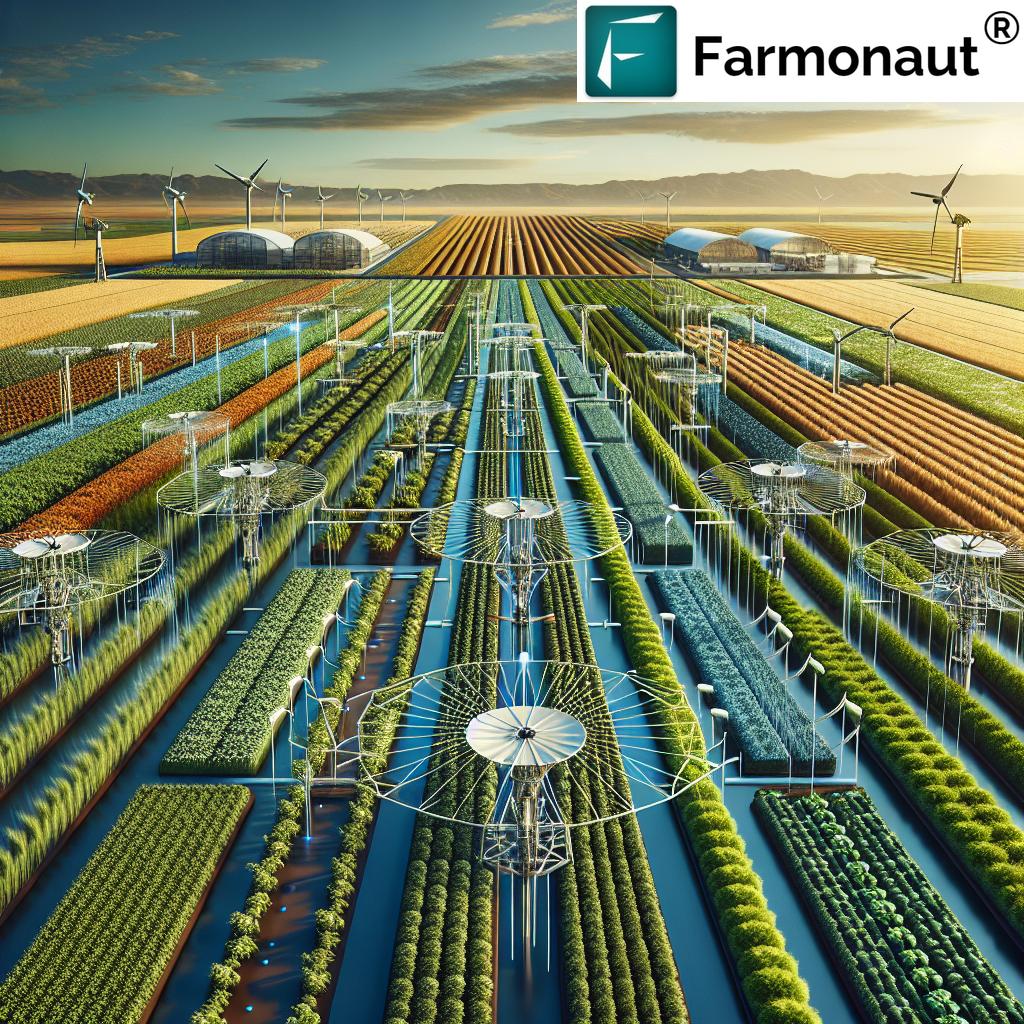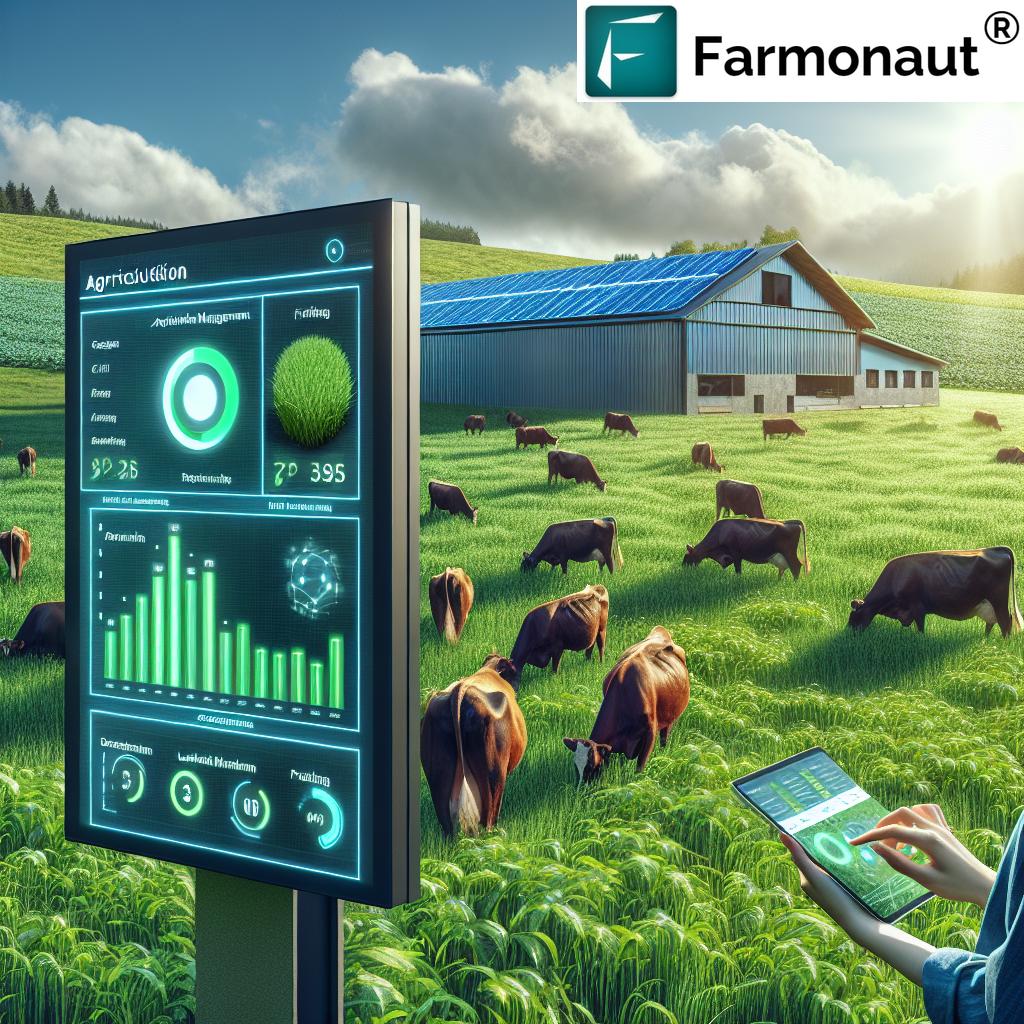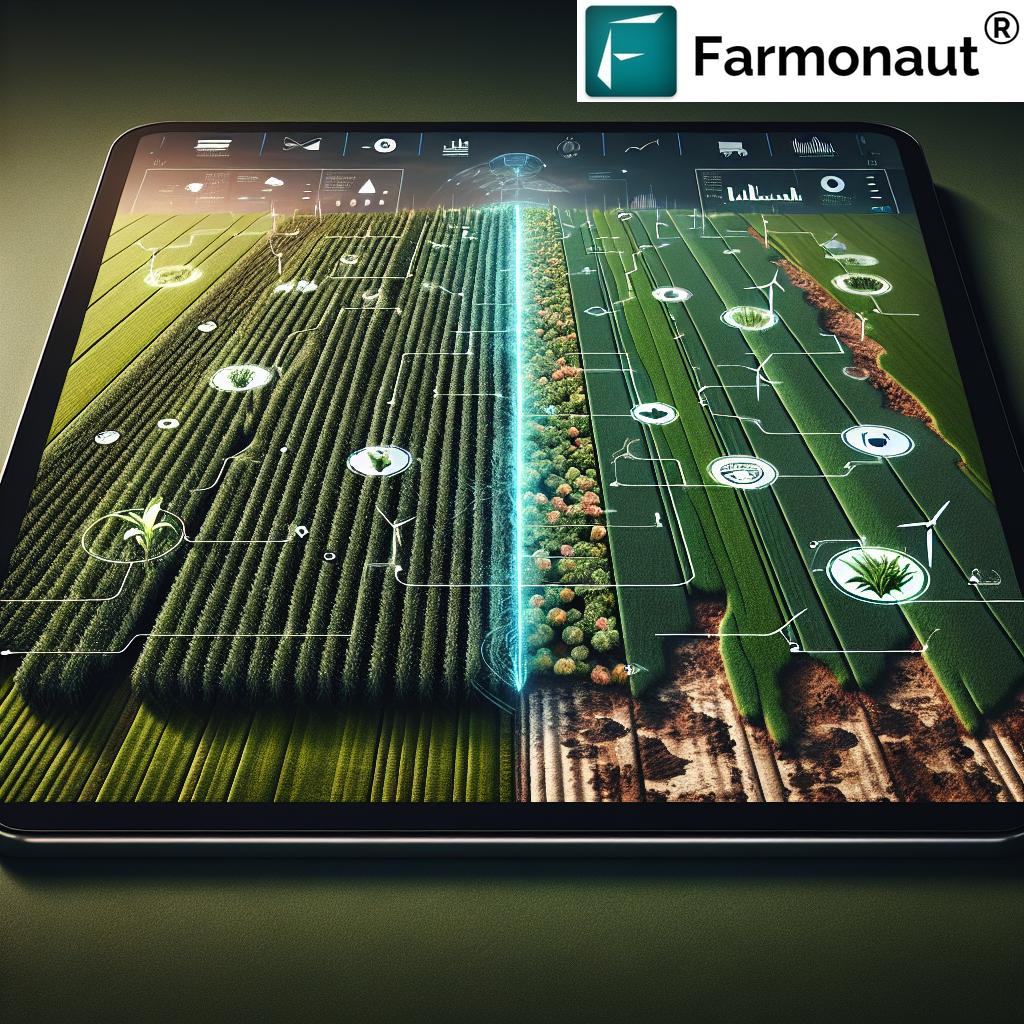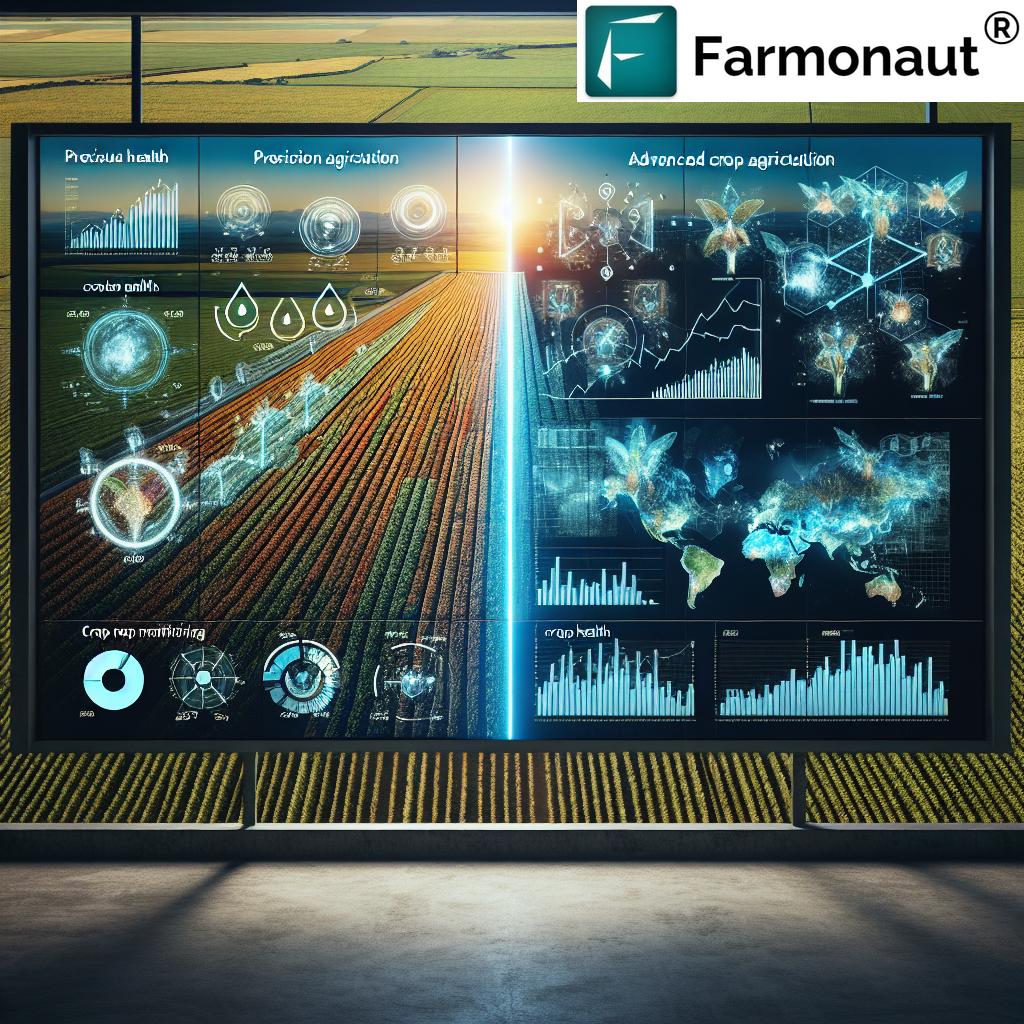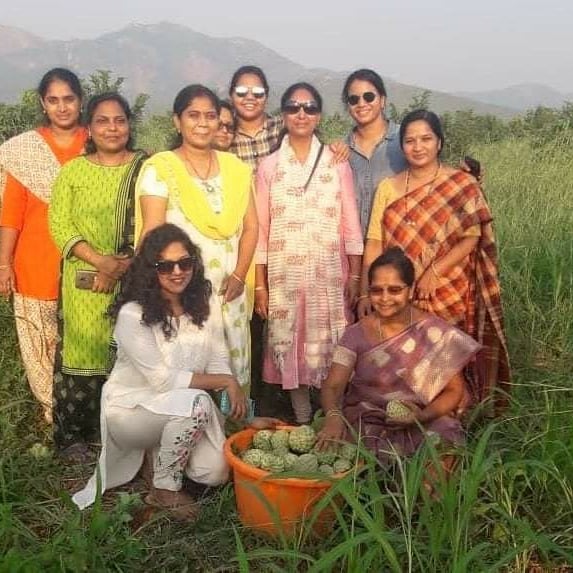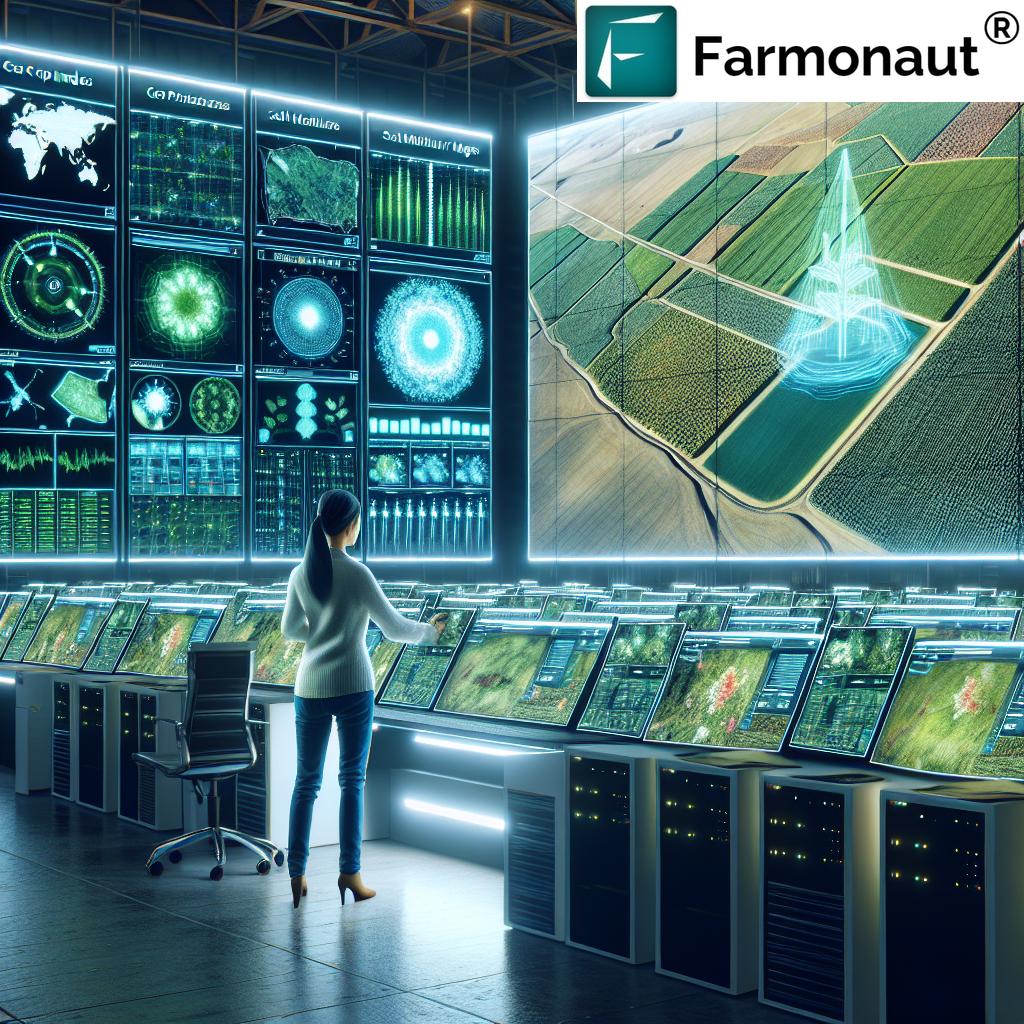Agricultural Technology: 10 Innovations You Must See!
“Over 70% of farmers using precision agriculture report increased crop yields and reduced input costs within the first year.”
Agricultural Technology: Summary & Importance
As we face the challenge of feeding a growing global population, agricultural technology (ag-tech) stands at the forefront of this revolution. Ag-tech encompasses a wide range of innovative tools, techniques, and digital solutions aimed at enhancing farming efficiency, productivity, and sustainability. From the early use of simple implements to today’s advanced farm management systems, our progress in agriculture is a testament to human ingenuity and adaptation.
Modern agricultural technology solutions now leverage a blend of satellite imagery, artificial intelligence (AI), machine learning, precision agriculture methods, IoT and drones to optimize the use of resources, monitor crop health, and provide data-driven decision-making power to farmers worldwide. The benefits touch every aspect—enabling us to save water, minimize fertilizer and pesticide overuse, increase crop yields, and adopt more environmental-friendly farming practices for long-term sustainability.
In this comprehensive guide, we explore the top 10 innovations in agricultural technology that are reshaping how we cultivate and manage our farms, impacting not only our food systems but also the planet.
Historical Evolution of Agricultural Technology
The evolution of agricultural technology is a remarkable journey. Our earliest ancestors crafted rudimentary farming tools—like the wooden plow—to cultivate land more effectively. The invention of irrigation systems empowered ancient civilizations to transform arid lands into fertile fields, laying the foundation for sustained crop production.
The Industrial Revolution marked an explosive period for agricultural advances. Mechanized equipment—from steel plows to steam-powered tractors—enabled us to prepare more land, sow crops quickly, and harvest larger yields. Combine harvesters reduced the need for labor while significantly boosting productivity.
In the mid-20th century, the Green Revolution brought the widespread adoption of chemical fertilizers, pesticides, and high-yield crop varieties. These advancements increased food production dramatically—but not without raising concerns over environmental impact, soil health, and sustainability.
Today, we are in the midst of a digital agricultural revolution, harnessing sophisticated technologies like AI, satellite-based monitoring, blockchain, and connected IoT ecosystems to build a more sustainable and resilient food production future.
- Enhancing productivity: Data-driven insights for superior planning and resource usage.
- Promoting environmental stewardship: Reducing resource wastage and preserving ecosystems.
- Empowering farmers globally: Democratizing access to cutting-edge tools and knowledge.
Top 10 Innovations Transforming Agriculture
Let’s dive into the ten most impactful innovations driving the modern agricultural technology landscape—each contributing significant advances to productivity, efficiency, and sustainability.
-
Precision Agriculture Platforms
Precision agriculture uses GPS, GIS, and remote sensing technology to manage field variability, optimize resource usage, and increase yields. Through data collection (soil, moisture, nutrient, crop health, and weather), farmers can make informed, targeted decisions on irrigation, fertilizers, and pesticides.
Satellite-based platforms—like those provided by Farmonaut—deliver high-resolution crop health monitoring, allowing timely interventions and minimizing environmental impact.
- Benefits: Lower input costs, higher yields, targeted nutrient delivery, reduced environmental impact.
- Use Farmonaut: Large-scale farm management tools for precise monitoring and analytics across plantation or region.
-
Agriculture Drones & Aerial Monitoring
Agriculture drones (UAVs) have become vital farm management tools for monitoring, mapping, and crop spraying. These drones, equipped with multispectral and thermal cameras, provide aerial images to detect issues like pest infestations, nutrient deficiencies, water stress, and even report precise plant health.
Precision spraying enables targeted delivery of pesticides and fertilizers, reducing chemical usage and environmental risk.
- Benefits: Faster detection, accurate surveillance, lower chemical costs, improved sustainability.
- Interested in satellite-based monitoring? Explore Farmonaut’s crop health monitoring for real-time farm insights on web, Android, and iOS.
“Satellite imagery now covers more than 80% of global farmland, revolutionizing crop monitoring and management.”
-
Smart Irrigation Systems & IoT in Farming
The Internet of Things (IoT) connects sensors to fields, plants, and water sources—providing real-time info on soil moisture, temperature, and nutrient levels. Smart irrigation systems can automatically deliver the right amount of water, based on up-to-the-minute sensor readings, significantly reducing water usage and operating costs.
IoT in farming is key for sustainable farming practices, combating issues like water scarcity, pollution from excessive fertilizers, and facilitating optimal plant growth.
- Benefits: Water savings, fewer labor hours, improved yields, less runoff and pollution.
-
Check out Farmonaut’s resource management tools for water and resource optimization through advanced data-driven analytics:
Fleet Management
-
AI in Agriculture: Artificial Intelligence & Machine Learning
AI in agriculture brings smarter prediction, diagnostics, and decision-making to the farm. Machine learning models analyze sensor, crop, and satellite data to identify patterns, predict yields and weather, and recommend ideal interventions. Farmers now use AI-powered image analysis to catch early signs of crop diseases, detect nutrient deficiencies, and even spot small pest infestations.
AI-driven systems—like Farmonaut’s Jeevn AI Advisory—merge real-time satellite imagery with weather data to provide personalized crop advice, monitor field health, and optimize fertilizer and pesticide use.
- Benefits: Accurate forecasts, reduced crop losses, higher profitability, less resource wastage.
- AI-based advisory for your farm? Leverage Farmonaut’s real-time crop advisory and management solutions.
-
Farm Robotics: Automation for Labor & Efficiency
Agricultural robotics automate planting, weeding, harvesting, and soil preparation. Autonomous tractors use GPS and AI to execute precise fieldwork with minimal supervision. Harvesting robots delicately pick fruits or vegetables, reducing damage and labor costs. Weeding robots use computer vision to differentiate crops from weeds and perform accurate mechanical weeding, promoting sustainable practices through reduced chemical use.
- Benefits: Addressing labor shortages, increased productivity, cost savings, less herbicide application.
-
Blockchain in Agriculture & Food Supply Chains
Blockchain technology brings new levels of transparency, traceability, and trust to agricultural supply chains. By storing transactions in a tamper-proof way, farmers and businesses can guarantee the authenticity of organic or fair trade products, trace food from farm to fork, and verify resource use at every stage.
Farmonaut’s blockchain-based traceability solution gives companies, especially in textiles and food, a reliable method to promote sustainability and transparency.
- Benefits: Consumer trust, prevention of fraud, compliance with regulations, improved brand reputation.
-
Learn about Farmonaut’s traceability offering:
Product Traceability with Blockchain
-
Nanotechnology in Agriculture: Materials for Precision
Nanotechnology in agriculture exploits novel materials at the molecular level. Examples include controlled-release fertilizers or pesticides that deliver nutrients exactly when and where plants need them. Nanosensors can detect soil nutrient levels, moisture, or pathogens with remarkable precision, providing data-driven management of field resources.
- Benefits: Minimized chemical use, improved plant health, smarter fertilization, higher sustainability.
-
Mobile Technology and Apps: On-the-Go Decisions
Mobile agriculture apps put weather forecasts, crop health analytics, marketplace prices, and expert advisory right in the hands of farmers—especially important for those in remote areas. Real-time notifications about pest infestations, weather, or water shortages allow quick interventions that save time and resources.
-
Automated Farm Management Systems
Farm management systems integrate multiple digital agriculture solutions—satellite imagery, sensors, fleet tracking, advisory, compliance, and analytics—into a single platform. They empower farmers, agribusinesses, and even government projects to track every detail of production, from crop health monitoring to fleet usage and input allocation.
- Benefits: Reduced overheads, better risk management, scalability, faster reporting, regulatory compliance.
-
Explore Farmonaut’s solution:
Large-scale Management for Farms & Agribusinesses
-
Sustainable Farming Practices & Carbon Footprinting
Advanced agricultural technology tools help us measure, monitor, and reduce our environmental footprint. Whether it’s minimizing fertilizer/pesticide usage with precision agriculture, or deploying carbon footprint tracking via digital platforms like Farmonaut, these practices support regulatory compliance, meet market demands for sustainability, and preserve natural resources.
- Benefits: Preserved soil health, clean water, improved biodiversity, better climate resilience.
-
Review your farm’s carbon impact:
Farmonaut Carbon Footprinting
Comparison Table: 10 Innovations at a Glance
Farmonaut: Pioneering Digital Agriculture Solutions
At the core of accessible precision agriculture and sustainable farming is Farmonaut—a leader in agricultural technology that’s transforming how farmers, cooperatives, agribusinesses, and even governments manage crops and resources.
Platform Overview
- Satellite-Based Crop Monitoring: Farmonaut’s platform delivers multispectral satellite images for detailed vegetation and crop health monitoring alongside soil moisture, temperature, and nutrient levels. This data-driven approach helps us make informed decisions for irrigation, fertilizer use, and pest management—resulting in optimized resource allocation and yield increases.
- AI-Driven Jeevn Advisory: Our artificial intelligence module analyzes weather and satellite imagery, providing real-time recommendations for everything from planting and fertilization to pest intervention.
- Blockchain-Based Traceability: Ensures product authenticity and transparent supply chains, building confidence for food brands and consumers alike.
- Resource & Fleet Management: Digital fleet tracking and resource optimization tools reduce costs and improve operational efficiency.
- Carbon Footprinting: Real-time monitoring of agricultural emissions enables sustainable practices and regulatory compliance. Track, report, and reduce your carbon footprint with our platform.
- API & Integration: Farmonaut’s API and developer documentation allow seamless integration of satellite and weather intelligence into any farming app or research workflow.
Who Benefits?
- Individual farmers: Make precise, informed decisions with easy-to-use, affordable farm management systems.
- Agribusinesses: Monitor large-scale plantations, manage fleets, and optimize supply chains using AI and blockchain.
- Policy/Government: Support large-scale farm monitoring, subsidy planning, and yield estimation.
- Corporate clients (food, textile): Establish trust in supply chain sourcing with blockchain traceability.
- Financial Institutions: Use satellite-based verification for crop loans and insurance, enhancing access and reducing fraud risk.
Cost-Effective, Scalable, Sustainable
- Affordable for All: No need for expensive on-site hardware—Farmonaut leverages existing satellite infrastructure to keep precision agriculture within reach, whether managing a 1-hectare field or a 10,000-hectare plantation.
- Modular, Scalable Solutions: Choose the precise mix of features you need, and easily scale as your operation grows.
- Empowering Sustainability: Through carbon tracking, minimal input use, and maximized yield, Farmonaut supports climate-resilient and sustainable farming practices.
Farmonaut Subscription Plans
Challenges and Future Prospects in Agricultural Technology
While agricultural technology solutions have become more accessible and user-friendly, several challenges remain:
- High Initial Costs: For many smallholder farmers, the upfront investment in digital tools or satellites can be daunting—although long-term savings often outweigh these barriers.
- Technical Knowledge Gap: Not all farming communities have the technical training needed to maximize benefits from apps, sensors, or analytics.
- Infrastructure & Connectivity: Rural areas may lack robust internet, hindering the spread of IoT in farming and cloud-based decision support systems.
- Digital Divide: Ensuring equitable access for all, regardless of region or scale, is a crucial next step.
- Data Privacy & Cybersecurity: Protecting farmers’ data is paramount as farms become more digitally connected.
The future points towards:
- Continued miniaturization and affordability of sensors and devices, making precision agriculture more accessible for all.
- Wider deployment of drones and automated machinery, dramatically reducing labor costs and increasing 24/7 productivity.
- Integration of blockchain in agriculture for universal traceability and compliance across continents.
- Next-generation platforms that merge satellite AI, mobile notifications, and regulatory compliance, empowering everyone in the farm-to-food value chain.
- Greater support for climate-resilient and ethical sustainable farming practices.
As agricultural technology continues to evolve, collaborations among innovators, policymakers, and the farming community will ensure a secure, productive, and sustainable food future for all.
Frequently Asked Questions (FAQs) on Agricultural Technology
- What is agricultural technology?
- Agricultural technology (ag-tech) refers to the use of innovative tools, techniques, and digital platforms—like satellite imagery, data analytics, AI, and IoT—to improve operational efficiency, crop productivity, sustainability, and farm management.
- How does precision agriculture help farmers?
- Precision agriculture leverages site-specific data and digital monitoring to optimize input usage (such as water, fertilizers, and pesticides), maximize yields, and reduce environmental impact by enabling precise, timely interventions.
- What are the benefits of integrating AI in agriculture?
- AI helps in forecasting weather, predicting pest or disease outbreaks, and offering personalized decision support, all of which increase efficiency and reduce risks for farmers.
- How do drones and satellite imagery impact farming?
- Drones and satellites provide aerial imagery for real-time crop health monitoring, helping farmers detect issues early, manage resources, and apply inputs efficiently.
- What is blockchain in agriculture used for?
- Blockchain technology ensures product traceability and transparency throughout the agricultural supply chain, helping farmers and brands verify organic status, regulatory compliance, and prevent fraud.
- How do I access Farmonaut’s technology?
- You can manage your fields via Farmonaut’s web and mobile apps, or integrate Farmonaut’s API directly into your business or research workflows. Explore developer docs here.
Conclusion: The Future is Digital, Data-Driven, & Sustainable
Agricultural technology is more than just a collection of gadgets or software—it represents a fundamental shift towards a data-driven, resource-efficient, and environmentally responsible approach to meeting the global challenge of food production. Through precision agriculture, AI, drones, IoT, blockchain, and sustainable practices, we are rewriting how we achieve high yields, farm profitability, and ecosystem preservation.
With leaders like Farmonaut making advanced digital solutions affordable and accessible, every stakeholder—from smallholder farmers to global agribusinesses—can take part in the future of farming. Together, we can build an agriculture system that’s not only productive but also sustainable for generations to come.


